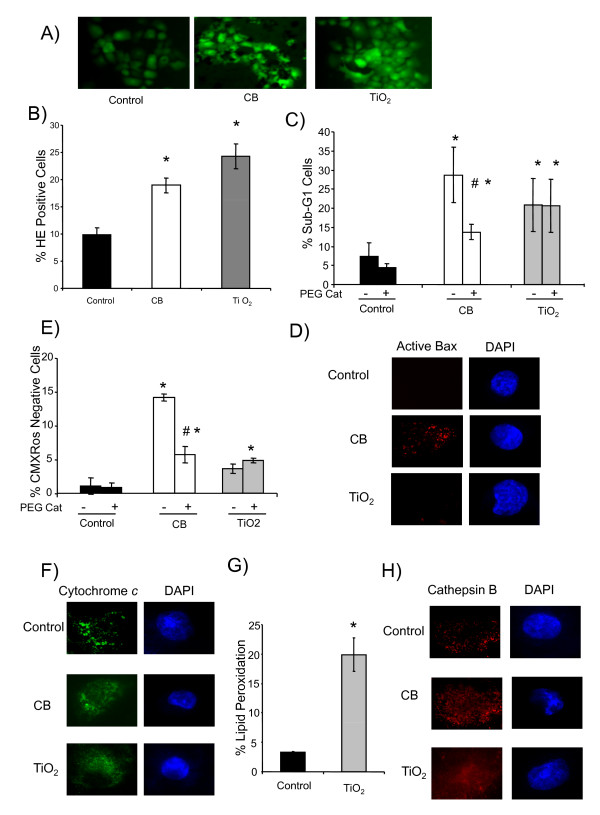Figure 7.
Confirmation of distinct apoptotic pathways in normal human bronchial epithelial cells (NHBE cells) after CB and TiO2 NPs exposure at 20 μg.cm-2 for 4 hours. A) oxidative stress (DCFH-DA staining analyzed by fluorescent microscopy) (× 200). B) oxidative stress (% HE positive cells by flow cytometry) C) DNA fragmentation (% of cells in sub-G1 peak by flow cytometry), D) loss of mitochondrial membrane potential (% cells with low CMXRos staining by flow cytometry) E, F) immuno fluorescence for activated Bax (6A7) and cytochrome c (c-20). Nuclei were counterstained with DAPI. (×1000) Representative images of a cell undergoing apoptosis after treatment with CB and TiO2 NPs. G) lipid peroxidation (% of cells with high bodipy staining by flow cytometry) H) immuno fluorescence for cathepsin B (CB59-4B11). Nuclei were counterstained with DAPI. (×1000) Representative images of a cell undergoing apoptosis after treatment with CB and TiO2 NPs. For HE staining, DNA fragmentation and loss of mitochondrial membrane potential (MMP) NHBE cells were analyzed after 4 hours NP exposure with or without pre and cotreatment with 1000 I.U. pegylated catalase. Data are represented as mean ± SD (n = 3). Representative result of three independent experiments. * statistically different from control p < 0.05 (two tailed). # statistically different from particle treated group without catalase p < 0.05 (two tailed).

